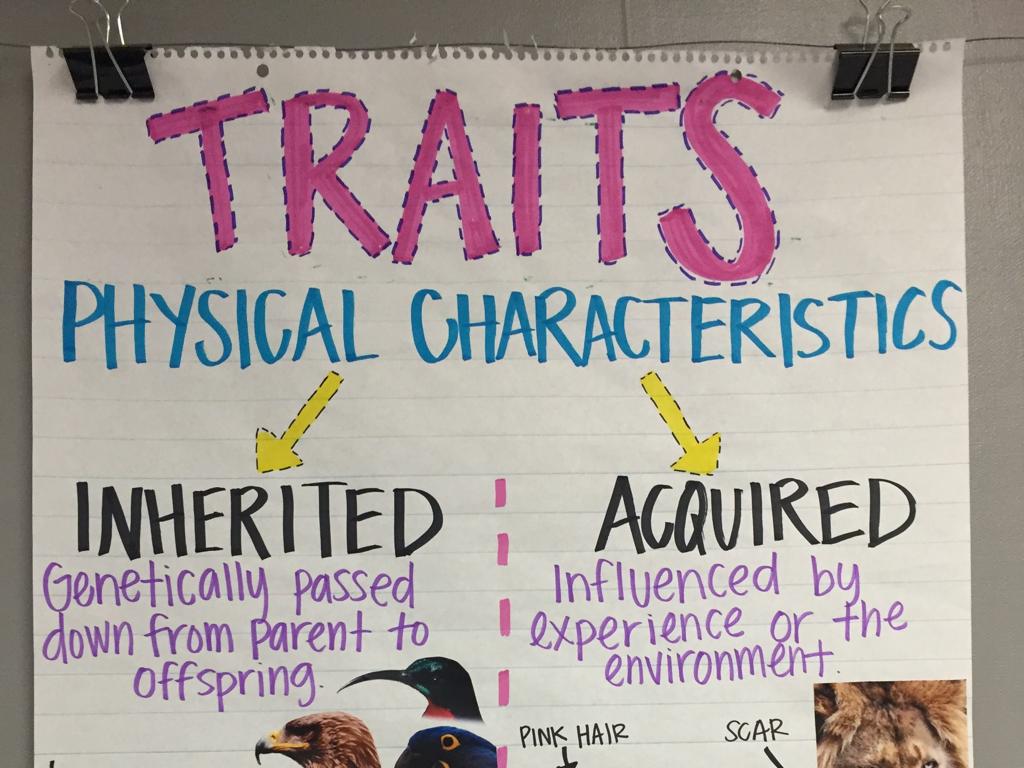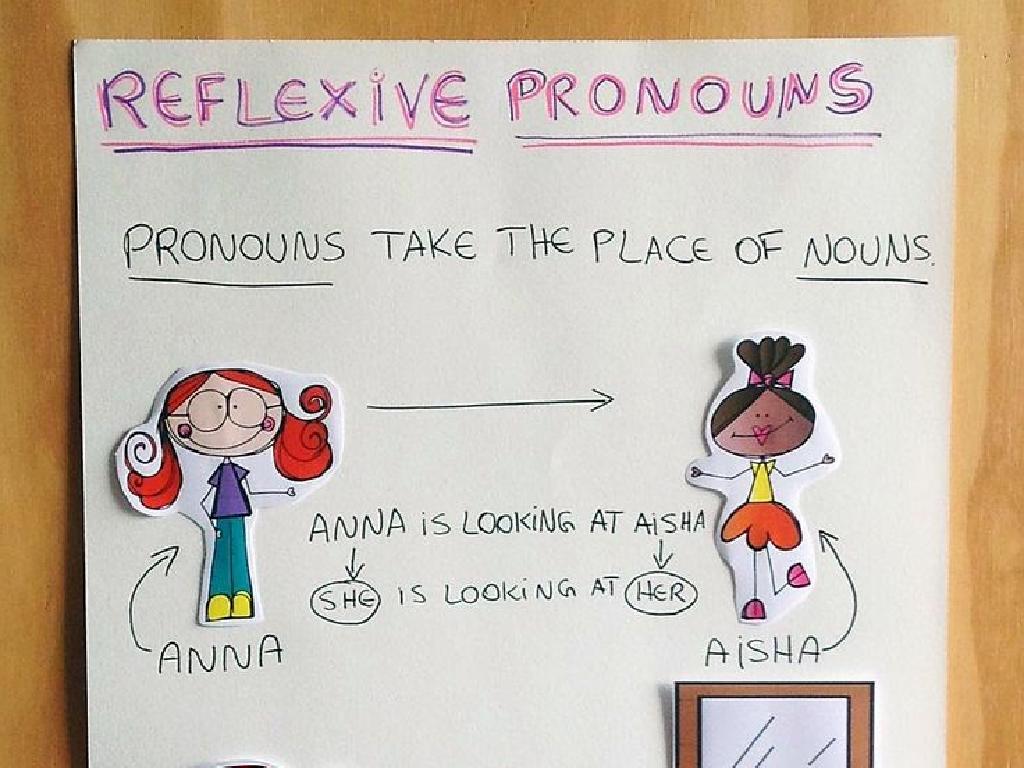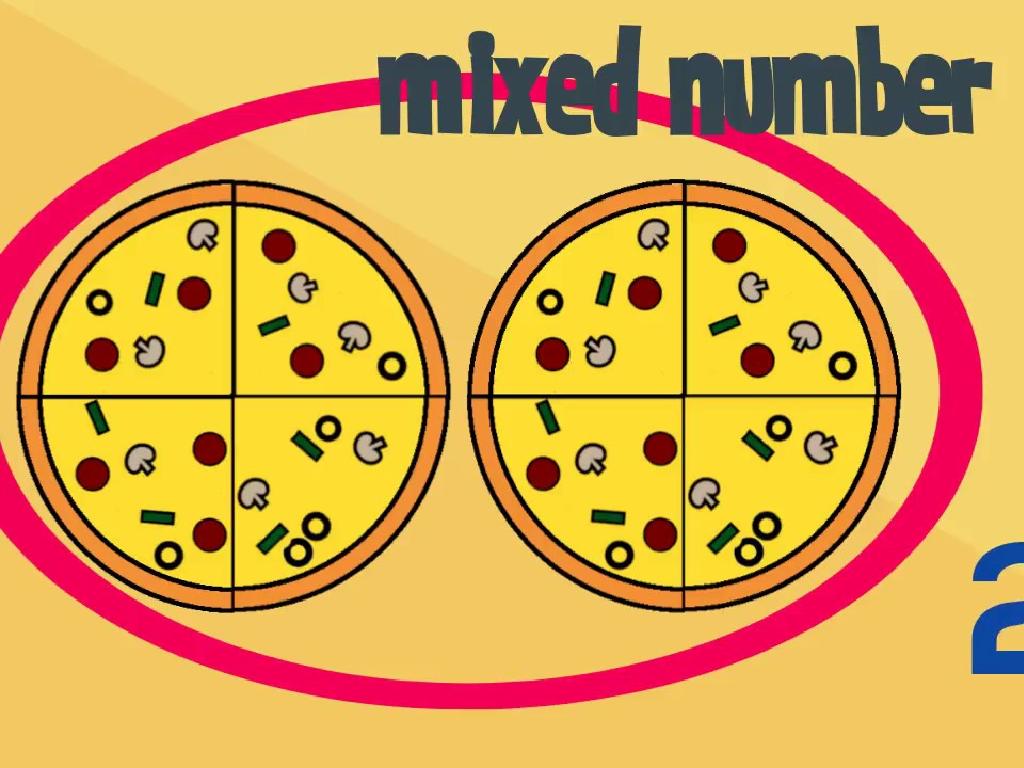Identify The Compound Subject Or Compound Predicate Of A Sentence
Subject: Language arts
Grade: Sixth grade
Topic: Sentences, Fragments, And Run-Ons
Please LOG IN to download the presentation. Access is available to registered users only.
View More Content
Compound Subjects and Predicates
– Define compound subjects
– When two or more subjects share the same verb, e.g., ‘Tom and Jerry run.’
– Define compound predicates
– When a subject has two or more verbs, e.g., ‘She sings and dances.’
– Importance in sentence construction
– Understanding these helps avoid run-ons and create varied sentences.
– Examples in literature
– Find sentences in books where characters do multiple actions.
|
This slide introduces the concept of compound subjects and predicates as a foundation for understanding sentence structure. Compound subjects occur when two or more subjects share the same verb, which allows for more complex ideas to be conveyed. Compound predicates happen when a single subject has multiple verbs, showing various actions or descriptions. Grasping these concepts is crucial for students to avoid run-on sentences and to enhance their writing with more interesting and varied sentence structures. Provide examples from literature or encourage students to create their own sentences with compound subjects and predicates to reinforce the lesson.
Understanding Sentences
– Definition of a sentence
– A sentence is a group of words that conveys a complete idea.
– Sentence components
– Every sentence has a subject and a predicate.
– Example of a simple sentence
– ‘The cat’ is the subject, ‘sleeps’ is the predicate.
– Expressing complete thoughts
– It must be clear and have a purpose.
|
Begin the lesson by defining what a sentence is, emphasizing that it is not just a collection of words, but a group that expresses a complete thought. Explain that every sentence must have a subject, which is what or whom the sentence is about, and a predicate, which tells something about the subject. Use the example ‘The cat sleeps’ to illustrate a simple sentence with a clear subject and predicate. Highlight that for a group of words to be considered a sentence, it must express a complete thought, providing clarity and purpose to the reader. Encourage students to identify subjects and predicates in example sentences and to create their own sentences to reinforce the concept.
Sentence Structure: Fragments and Run-ons
– Understanding sentence fragments
– Fragments lack a subject or predicate, e.g., ‘Jumped high.’
– Recognizing run-on sentences
– Run-ons combine multiple thoughts without proper punctuation.
– Example of a fragment
– ‘Jumped high’ is missing who or what jumped.
– Example of a run-on
– ‘The dog barked the cat ran’ should be two sentences.
|
This slide aims to help students differentiate between sentence fragments and run-on sentences. Fragments are incomplete because they are missing a subject (who or what) or a predicate (what about it). Run-on sentences cram too many ideas into one sentence without proper punctuation or conjunctions. Use the examples provided to illustrate common mistakes. Encourage students to look for the subject and predicate in each sentence to determine completeness. Instruct them to practice rewriting fragments and run-ons into complete, correctly punctuated sentences.
Understanding Compound Subjects
– Compound subjects explained
– Two or more subjects with the same predicate
– Conjunctions join subjects
– ‘and’, ‘or’, ‘nor’ are common connectors
– Example of compound subject
– ‘My friend and I’ share the action ‘play’
|
This slide introduces the concept of compound subjects in sentences. A compound subject occurs when two or more subjects share the same verb or action, known as the predicate. They are typically connected by conjunctions such as ‘and’, ‘or’, or ‘nor’. For example, in the sentence ‘My friend and I play basketball,’ ‘My friend and I’ form the compound subject who are performing the action ‘play’. It’s important to show students how to identify these subjects and understand that they share the same predicate. Encourage students to create their own sentences with compound subjects to reinforce the concept.
Understanding Compound Predicates
– Compound predicates defined
– Two or more predicates with the same subject
– Conjunctions join predicates
– Use ‘and’, ‘but’, ‘or’ to connect predicates
– Example of compound predicate
– ‘She writes stories and composes music.’
|
This slide introduces the concept of compound predicates to the students. A compound predicate occurs when two or more verbs or verb phrases share the same subject and are typically connected by conjunctions such as ‘and’, ‘but’, or ‘or’. It’s important to emphasize that even though the actions (predicates) are different, they are both done by the same subject. The example provided should help students visualize how a subject can perform multiple actions in a sentence. Encourage students to create their own sentences with compound predicates to reinforce their understanding.
Identifying Compound Elements in Sentences
– Understanding compound subjects
– A compound subject has two or more subjects connected by a conjunction.
– Recognizing compound predicates
– Compound predicates have two or more verbs or verb phrases connected by a conjunction.
– Conjunctions link subjects or predicates
– Words like ‘and’, ‘or’, ‘but’ join subjects or predicates in a sentence.
– Practice with examples
– ‘The dog and cat’ is a compound subject in our practice sentence.
|
This slide is aimed at helping students identify compound subjects and predicates within sentences. Begin by explaining that a compound subject includes two or more subjects joined by a conjunction such as ‘and’ or ‘or’. Similarly, compound predicates consist of two or more verbs or verb phrases connected by a conjunction. Emphasize the role of conjunctions in forming compound elements. Use the practice sentence to illustrate how ‘The dog and cat’ form a compound subject, working together to perform the action ‘chased’. Encourage students to find additional examples in their reading or create their own sentences with compound subjects and predicates.
Your Turn: Spot the Compound Elements
– Identify compound subjects
– ‘The teacher and students’ is a compound subject
– Identify compound predicates
– ‘Prepared and presented’ is a compound predicate
– Analyze a given sentence
– Share your findings with the class
|
This slide is an interactive class activity designed to help students identify compound subjects and predicates within a sentence. The example sentence provided includes both a compound subject (‘The teacher and students’) and a compound predicate (‘prepared and presented’). Students should analyze the sentence structure to determine which parts are acting together as a unit. Encourage them to look for conjunctions like ‘and’ that often link the elements of a compound subject or predicate. After identifying, students will share their findings, fostering a collaborative learning environment. As they present, guide them to explain how they recognized the compound elements. This activity will enhance their understanding of sentence structure and improve their ability to construct complex sentences.
Class Activity: Crafting Compound Elements
– Write sentences with a partner
– One sentence with a compound subject
– A compound subject has two or more subjects joined by a conjunction, e.g., ‘Tom and Jerry chase each other.’
– Another with a compound predicate
– A compound predicate has two or more verbs or verb phrases joined by a conjunction, e.g., ‘The cat runs and hides.’
– Share and discuss in class
|
This activity is designed to help students understand and create compound subjects and predicates. By working in pairs, students can collaborate and learn from each other. After writing their sentences, they will share them with the class to gain feedback and different perspectives. Discussing the impact of compound elements on sentence variety and detail will enhance their writing skills. Encourage creativity and provide examples if needed. Possible activities: 1) Students can identify compound elements in a book excerpt. 2) Create a story with alternating sentences using compound subjects and predicates. 3) Have a competition for the most creative compound sentence. 4) Rewrite simple sentences to include compound elements. 5) Illustrate their sentences to show the compound parts.
Compound Subjects and Predicates
– Define compound subject
– A compound subject has two or more subjects sharing the same verb, e.g., ‘Dogs and cats are pets.’
– Define compound predicate
– A compound predicate has two or more verbs or verb phrases that share the same subject, e.g., ‘She danced and sang.’
– Usage in writing
– Practice with examples
– Let’s identify compound elements in sentences.
|
This slide is aimed at reviewing the concepts of compound subjects and predicates. A compound subject includes two or more subjects connected by a conjunction and sharing the same verb, which allows for a more efficient and varied sentence structure. Similarly, a compound predicate consists of two or more verbs or verb phrases connected by a conjunction and relating to the same subject, adding richness to the writing. Emphasize the importance of using compound subjects and predicates to combine ideas and provide more information in a single sentence. During the practice, provide sentences and ask students to identify the compound subjects and predicates. This will help reinforce their understanding and application of the concepts.
Homework: Compound Subjects & Predicates
– Write sentences with compound subjects
– A compound subject has two or more subjects
– Write sentences with compound predicates
– A compound predicate has two or more verbs
– Circle subjects, underline predicates
– Share your sentences next class
|
This homework assignment is designed to reinforce the concept of compound subjects and predicates. Students are tasked with creating sentences that contain either a compound subject, which is when two or more subjects share the same verb, or a compound predicate, where a single subject has two or more verbs. Encourage students to think creatively and come up with sentences that reflect their daily experiences or interests. Remind them to use conjunctions such as ‘and’ or ‘or’ for compound subjects and verbs like ‘and’, ‘but’, or ‘or’ for compound predicates. In the next class, students will have the opportunity to share their sentences, allowing them to learn from each other’s examples. This will also provide a platform for discussing common mistakes and clarifying any misunderstandings about the topic.






